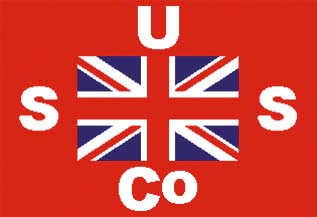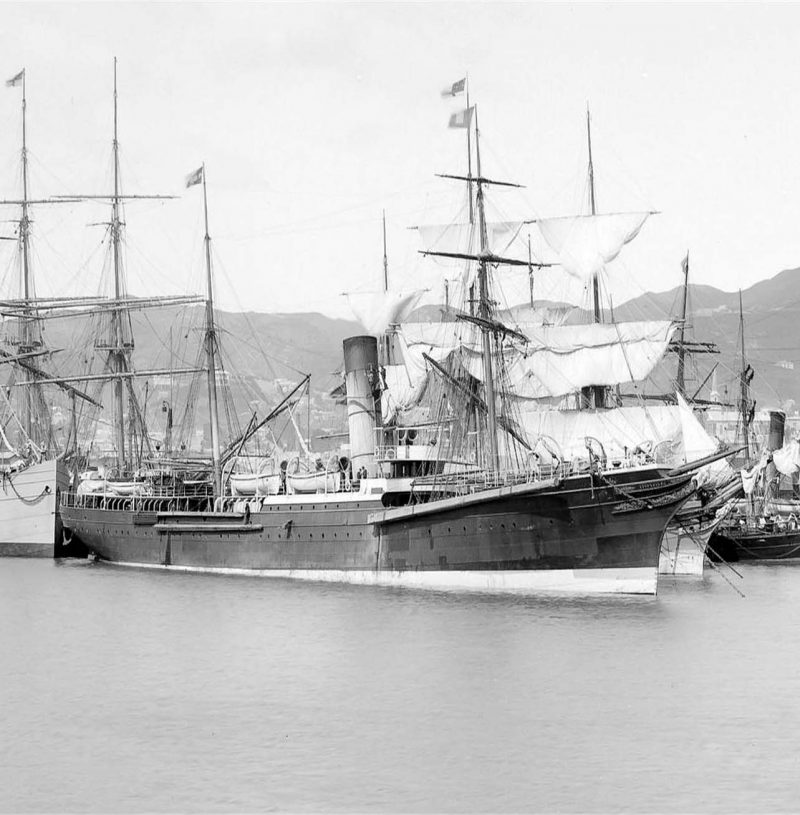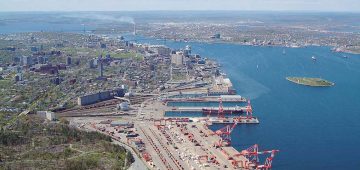125 Years of serving New Zealand and the Antipodes
 The splendid and beautiful bronze green hulls with a yellow band, and the red and black funnels, of the many passenger liners of the Union Steamship Company of New Zealand (USSNZ) were seen all across the Antipodes. The company was known as the ‘Southern Octopus’ in New Zealand, its tentacles reaching far out to Canada, United States of America, Australia, India, Pakistan, Malaysia and Indonesia.
The splendid and beautiful bronze green hulls with a yellow band, and the red and black funnels, of the many passenger liners of the Union Steamship Company of New Zealand (USSNZ) were seen all across the Antipodes. The company was known as the ‘Southern Octopus’ in New Zealand, its tentacles reaching far out to Canada, United States of America, Australia, India, Pakistan, Malaysia and Indonesia.  It owned no fewer than 350 ships over a 125 year period between 1875 and 2000, many of which were employed on a plethora of coastal New Zealand services serving both the North Island and the South Island. The vast majority of the fleet were given interesting Maori names, and those on Australian services had Australian aboriginal names.
It owned no fewer than 350 ships over a 125 year period between 1875 and 2000, many of which were employed on a plethora of coastal New Zealand services serving both the North Island and the South Island. The vast majority of the fleet were given interesting Maori names, and those on Australian services had Australian aboriginal names.
Early Beginnings
James Mills (1847-1936) grew up in Dunedin and the fifteen mile long Otago Peninsula in the southern part of the South Island of New Zealand. He was the third son of William Mills, the Collector of Customs at Dunedin. He joined John Jones in 1868 as a clerk in the running of the Harbour Steam Company, based at Otago but operating four paddle steamers, a brig and two schooners from Dunedin in the coastal South Island trades. When John Jones died a year later, James Miles took over as Manager and began to purchase newer and better steamers for the company e.g. Maori of 151 grt and Bruce of 335 grt. They took part in the gold rush of the late 1860s in the hinterland above Dunedin, with Dunedin becoming the foremost commercial centre of New Zealand at that time.


Dunedin only had a population of two thousand at this time, with few people living in the bare hills of the Otago Peninsula. Taiaroa Head was the first sight of land at the head of the peninsula for the Scottish emigrants, exiles and their families. The beautiful natural harbour was quickly protected by six inch guns of a special type manufactured by Armstrong of Newcastle upon Tyne. These guns are still in working order today and cannot be seen by approaching warships, but in action assume an elevated position, fire and then recoil to their lower hidden position in their pits.
The gold saw Dunedin prosper with interesting and diverse architecture in its buildings, beautiful parks and gardens. The Scottish pioneers were predominant amongst the first settlers, mixing with the indigenous Maori population and the Chinese gold miners. The nearby harbour of Port Chalmers, only ten miles from central Dunedin, was crowded with sailing ships and small early steamers, with half of the sailing ships owned by ‘Paddy Henderson’ and his Albion Shipping Company of Glasgow. James Mills tried to set up a new shipping company in March 1874 with the aim of serving the whole of New Zealand and with connections to Australia and Tasmania. Despite many attempts to raise capital locally, he took passage to Glasgow and met James Galbraith, manager of the Albion Shipping Company, and Peter Denny of the shipbuilding Denny family of Dumbarton. Peter Denny offered to build two steamers with an investment of £20,000 provided a new limited liability company was set up in Dunedin.
Subscribe today to read the full article!
Simply click below to subscribe and not only read the full article instantly, but gain unparalleled access to the specialist magazine for shipping enthusiasts.






Comments
Sorry, comments are closed for this item